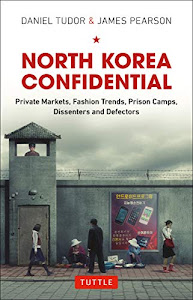
What is Life?: How Chemistry Becomes Biology
Catégorie: Informatique et Internet, Manga, Bandes dessinées
Auteur: Margaret Atwood
Éditeur: Jonathan Hickman
Publié: 2019-10-25
Écrivain: Jean-Noël Kapferer
Langue: Catalan, Français, Hindi
Format: epub, Livre audio
Auteur: Margaret Atwood
Éditeur: Jonathan Hickman
Publié: 2019-10-25
Écrivain: Jean-Noël Kapferer
Langue: Catalan, Français, Hindi
Format: epub, Livre audio
Covalent bonds (video) | Chemistry of life | Khan Academy - Covalent bonds involve the sharing of electron pairs between atoms. Electron pairs shared between atoms of equal or very similar electronegativity constitute a nonpolar covalent bond (, H–H or C–H), while electrons shared between atoms of unequal electronegativity constitute a …
Silkworm - The Life Cycle of Silkworm | Processing of Silk - · The life cycle of silk moth starts when a female silk moth lays eggs. The caterpillar or larvae are hatched from the eggs of the silk moth. The silkworms feed on mulberry leaves and give rise to pupa. In the pupa stage, a weave is netted around by the silkworm to hold itself. After that it swings its head, spinning a fibre made of a protein and becomes a silk fibre. Several caterpillars form a
Sulfhydryl-Reactive Crosslinker Chemistry | Thermo Fisher - Crosslinking chemistry is addressed in an easy-to-follow format designed to convey the important information you need without getting lost in details. Each Pierce crosslinking reagent is shown along with its structure, molecular weight, spacer arm length and chemical reactivity. The handbook concludes with a list of excellent references on crosslinker use and a glossary of common crosslinking
The Chemistry of Life - The Chemistry of Carbon Organic chemistry is the study of compounds with bonds between carbon atoms. Carbon atoms have four valence electrons, allowing them to form strong covalent bonds with many other elements, including hydrogen, oxygen, phosphorus, sulfur, and nitrogen. Living organisms are made up of molecules made of carbon and these
Biology Chapter 2- The Chemistry of Life - Biology Chapter 2- The Chemistry of Life. Essential Question: What are the basic chemical principles that affect living things? 2.1 The Nature of Matter. What 3 subatomic particles make up atoms? Atom - the basic unit of matter. If you were to lay 100 million atoms side by side they would be about 1cm long. Despite how small atoms are, they are composed of even smaller particles. The subatomic
Carbodiimide Crosslinker Chemistry | Thermo Fisher - Crosslinking chemistry is addressed in an easy-to-follow format designed to convey the important information you need without getting lost in details. Each Pierce crosslinking reagent is shown along with its structure, molecular weight, spacer arm length and chemical reactivity. The handbook concludes with a list of excellent references on crosslinker use and a glossary of common crosslinking
Biology - Wikipedia - Biology is the scientific study of life. It is a natural science with a broad scope but has several unifying themes that tie it together as a single, coherent field. For instance, all organisms are made up of cells that process hereditary information encoded in genes, which can be transmitted to future major theme is evolution, which explains the unity and diversity of life
Life - Wikipedia - Life is a characteristic that distinguishes physical entities that have biological processes, such as signaling and self-sustaining processes, from those that do not, either because such functions have ceased (they have died) or because they never had such functions and are classified as forms of life exist, such as plants, animals, fungi, protists, archaea, and bacteria
Chemistry and Chemical Biology | Harvard University - The - Chemistry and Chemical Biology is one of the programs in the Harvard Integrated Life Sciences, which facilitates collaboration and cross-disciplinary research. Visit HILS for additional application instructions. Science in the 21st century is rich with opportunity and challenge. Our pillars for success in this complex world are all tied to interactions—between people and between disciplines
PhET: Free online physics, chemistry, biology, earth - Founded in 2002 by Nobel Laureate Carl Wieman, the PhET Interactive Simulations project at the University of Colorado Boulder creates free interactive math and science simulations. PhET sims are based on extensive education <a 0>research</a> and engage students through an intuitive, game-like environment where students learn through exploration and discovery
[read], [epub], [english], [free], [pdf], [audible], [download], [online], [audiobook], [goodreads], [kindle]













0 komentar:
Posting Komentar
Catatan: Hanya anggota dari blog ini yang dapat mengirim komentar.